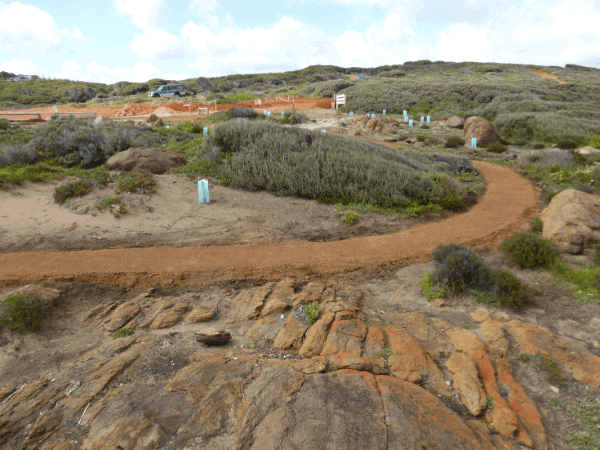
Who hasn’t picked up litter at the beach? Everyone is keen to keep our beaches clean right, but did you know an amazing not for profit organisation is coordinating, not only a huge effort to remove marine debris from our beaches, but also working to stop the flow of litter at its source?
The passionate crew at Tangaroa Blue Foundation, an Australia-wide not for profit are working hard to protect and preserve the marine and coastal environment by reducing marine debris, one of the biggest environmental issues facing our planet.
Tangaroa Blue is a one of hundreds of land and coastcare groups caring for our environment who have signed up as members of the WA Landcare Network, the peak state landcare body established to represent and support community based groups across WA.

As Australia’s leading organisation focusing on marine debris, Tangaroa Blue is catalysing action to prevent, track and remove marine debris before it reaches the marine environment. To help them achieve their goals, they have created the Australian Marine Debris Initiative (AMDI), an on-ground network of contributing volunteers, communities, organisations and partners. They empower people, businesses and governments to improve systems, processes and behaviours to achieve their main objective- to stop the flow of litter at the source.
The organisation’s largest and longest running annual event, the WA Beach Clean-Up started from humble beginnings focusing on the south west’s most iconic coastline through the Cape to Cape Beach Clean-Up in 2005.
The Annual Clean Up has continued to grow and evolve over time with the support of local communities. In 2021 the event saw clean ups conducted at 105 sites across WA from Kanidal Beach in the south to Butcher Bay in the northern Kimberley. 1,517 volunteers removed 3.1 tonnes of marine debris across 209 kilometres of coastline and more than 73,303 items were removed, sorted and recorded into the Foundation’s Australian Marine Debris Initiative (AMDI) Database. Amazing!
Tangaroa Blue’s CEO and Founder, Heidi Tait explains ‘So many people regularly pick up rubbish and it can get kind of overwhelming and frustrating that you have to become someone else’s rubbish collector.
By collecting data and being part of source reduction projects, Tangaroa Blue is assisting people to become citizen scientists and contribute to tangible solutions. This gives the action so much more value.’
The Australian Marine Debris Initiative (AMDI) has at its heart the largest marine debris database in the southern hemisphere recording over 20 million debris items by the end of 2021. The AMDI has over 2000 partner organisations who contribute by submitting their own clean-up data, and it has become a crucial tool for informing policy change at local, national and international levels.
Tangaroa Blue CEO, Heidi Tait at Yallingup Beach, 2004
The AMDI plays a key role in projects across Australia that are driving further research and strategies around litter and marine debris prevention as well as monitoring those that are implemented, to ensure they are having a positive impact.
Western Australia holds a special place in Tangaroa Blue’s heart. It has more than 12,800 kilometres of coastline, the most of any state in Australia. It is home to some of the most unique and biodiverse ecosystems on the planet. A walk along its length takes you past 2,000-year-old stromatolites, the world’s largest population of dugongs, and headlands where you can see the biggest animal ever to have lived, the blue whale, within a few hundred metres of land. It is also the place where Tangaroa Blue Foundation was founded.
Tangaroa Blue’s CEO and Founder, Heidi Tait explains ‘So many people regularly pick up rubbish and it can get kind of overwhelming and frustrating that you have to become someone else’s rubbish collector.
By collecting data and being part of source reduction projects, Tangaroa Blue is assisting people to become citizen scientists and contribute to tangible solutions. This gives the action so much more value.’
The Australian Marine Debris Initiative (AMDI) has at its heart the largest marine debris database in the southern hemisphere recording over 20 million debris items by the end of 2021. The AMDI has over 2000 partner organisations who contribute by submitting their own clean-up data, and it has become a crucial tool for informing policy change at local, national and international levels.
Tangaroa Blue CEO, Heidi Tait at Yallingup Beach, 2004
The AMDI plays a key role in projects across Australia that are driving further research and strategies around litter and marine debris prevention as well as monitoring those that are implemented, to ensure they are having a positive impact.
Western Australia holds a special place in Tangaroa Blue’s heart. It has more than 12,800 kilometres of coastline, the most of any state in Australia. It is home to some of the most unique and biodiverse ecosystems on the planet. A walk along its length takes you past 2,000-year-old stromatolites, the world’s largest population of dugongs, and headlands where you can see the biggest animal ever to have lived, the blue whale, within a few hundred metres of land. It is also the place where Tangaroa Blue Foundation was founded.